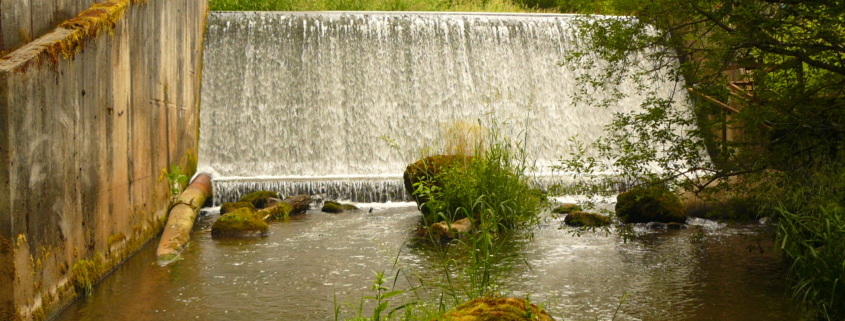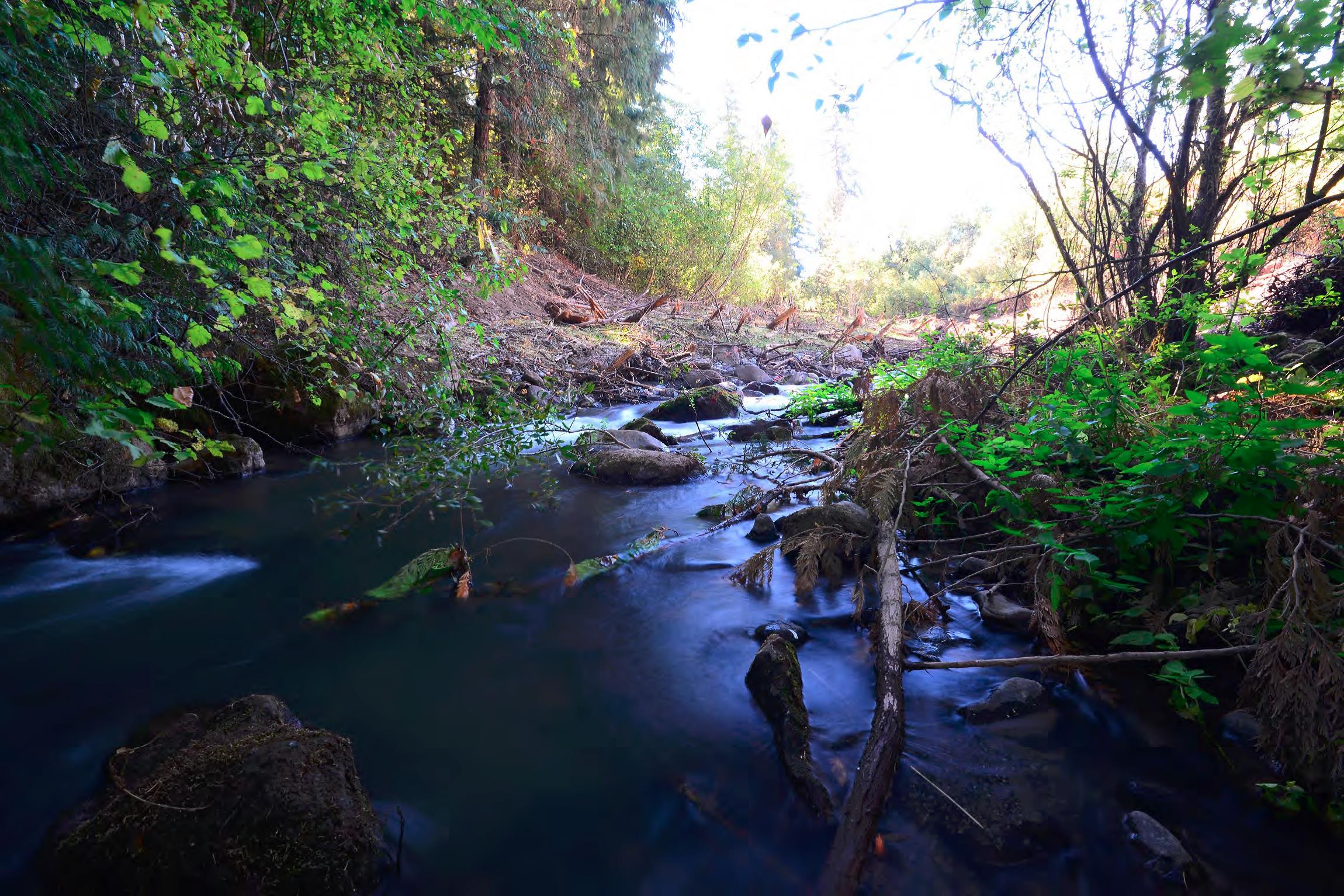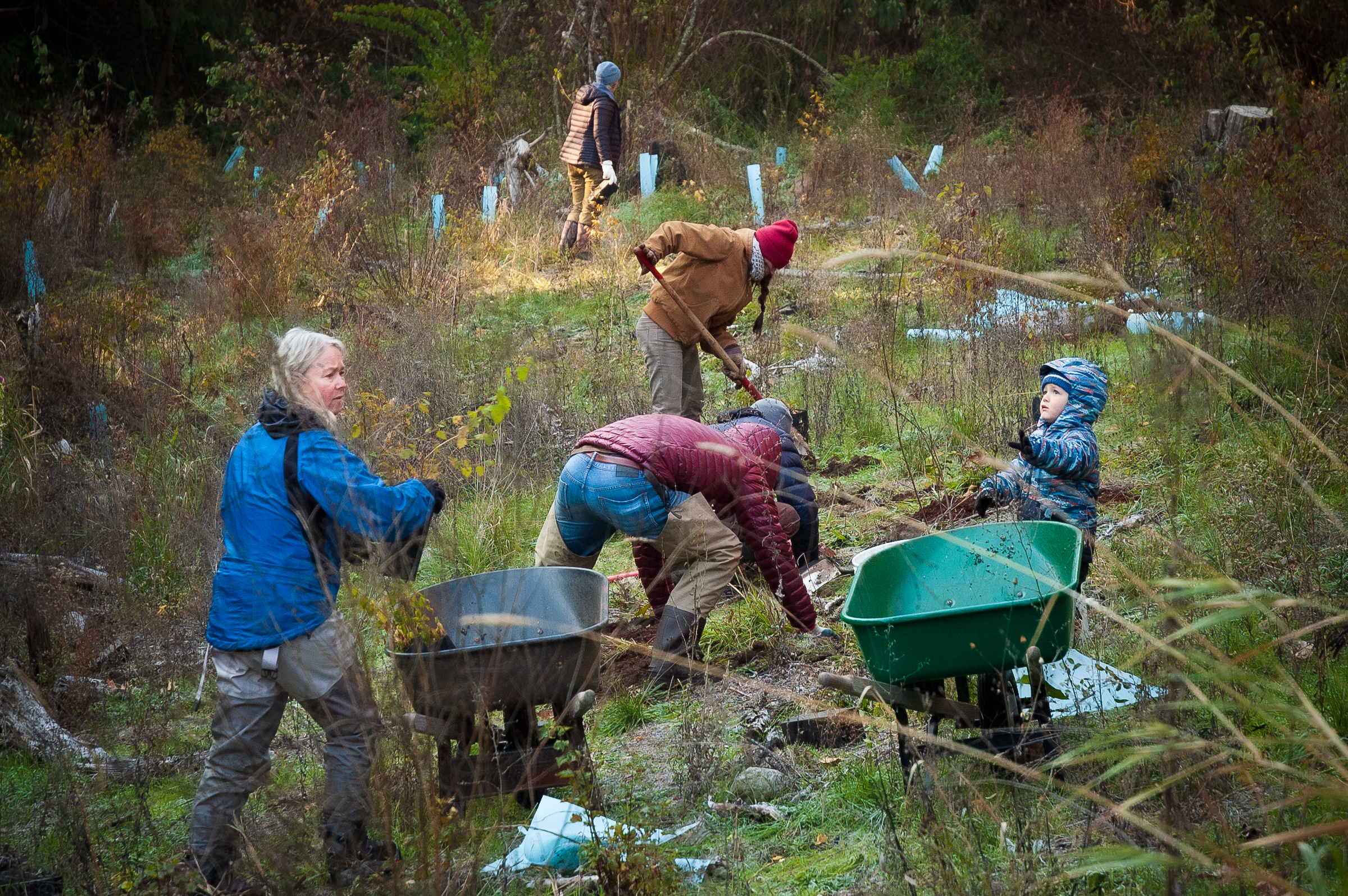Odell Creek Dam Removal and Stream Restoration
In summer of 2016, the Watershed Group, in partnership with Larry and Linda Hilton and the Oregon Department of Fish & Wildlife, removed the Odell Dam, restoring year-round fish passage to approximately five miles of winter steelhead habitat in Odell Creek. Unlike the Powerdale and Condit Dam removals, this project required restoration of the stream channel after the dam was removed. This included diverting the stream through a bypass pipe during the 3-month construction period and removing over 2,500 cubic yards (~210 dump truck loads) of sediment that had accumulated behind the dam.
Once the new channel area was excavated, large boulders and cobbles were placed to create the backbone of the new channel, and smaller cobbles, gravel, and sand were placed on top to form a natural streambed. Large wood was placed along the edge of the channel to improve fish habitat and protect 750 newly planted trees and shrubs from high streamflows. Lastly, a concrete vault with a fish screen was installed at the edge of the channel to replace the former irrigation diversion provided by the dam.
The Odell Creek Dam was built by Fred and Wilma Plog near the mouth of Odell Creek in 1985. It was operated as a private hydroelectric power-generating facility until 2010, at which time the Oregon Water Resources Department permit expired. To renew the permit, the dam needed to meet current fish passage and screening standards. However, an economic evaluation determined that upgrading the fish ladder and screen would cost more than future net power revenues would generate. Given the project’s negative value and the significant environmental impact to the creek, the landowner and hydro plant license holder agreed in 2013 to pursue decommissioning of the dam and restoration of the creek. Funding for this $450,000 project was provided by the Oregon Watershed Enhancement Board, the Oregon Department of Fish & Wildlife, and the Confederated Tribes of the Warm Springs.
Odell Creek is a non-glacial tributary of the lower Hood River, which has the potential to support winter steelhead, as well as populations of resident rainbow trout and coastal cutthroat trout within the 11 square mile watershed. To track the success of the dam removal and creek restoration, the Watershed Group has been conducting project effectiveness monitoring since the project was completed in 2016. This includes annual photo point monitoring for a visual representation of change over time, and monitoring of stream morphology characteristics over time. The Watershed Group also assists the Confederated Tribes of Warm Springs with annual fish surveys to track fish presence in the stream post-dam removal. As of 2019, the channel is performing very well and supporting a healthy population of fish. The riparian plantings are also doing well. The willow and Dogwood stakes along the channel margin have more than tripled in size. In the fall of 2019, the Watershed Group and a group of volunteers replanted an area on the west bank of the project where some plantings had suffered due to soil conditions.
Check out the dam removal and stream restoration process here.






